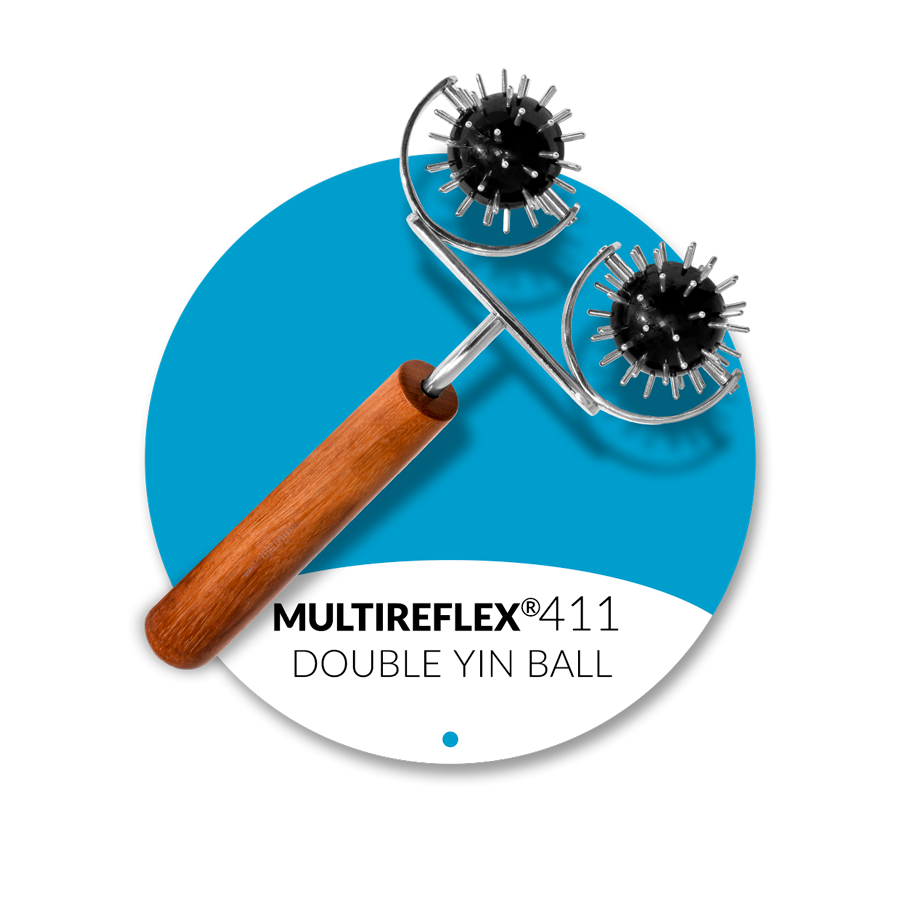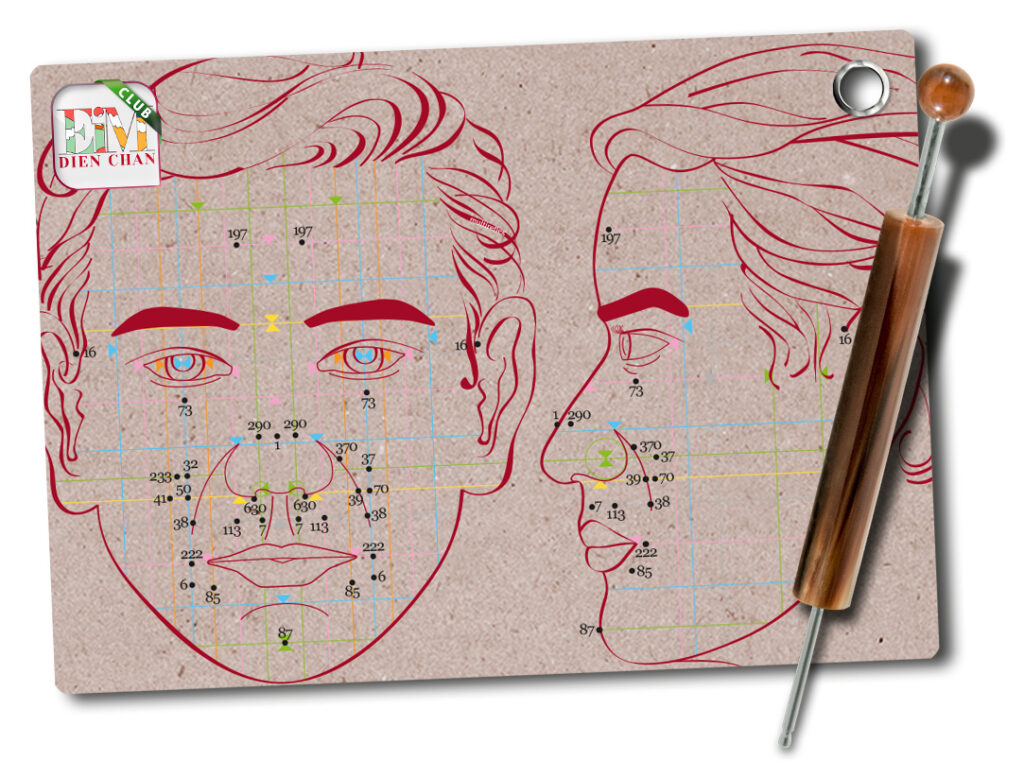Cholesterol & xanthelasmas

How can they be prevented and treated naturally using Dien Chan?
Xanthelasmas, those small yellowish plaques around the eyes, are most often caused by fatty deposits, frequently linked to high cholesterol. While their appearance may seem harmless, they are often a sign of metabolic imbalance associated with liver dysfunction.
Let’s take advantage of our team’s extensive experience to explore how Dien Chan can boost your liver system. With a few simple lifestyle adjustments, we can prevent and treat these fatty deposits effectively.
Treating the root cause:
› the liver and diet
The liver plays a key role in fat elimination and cholesterol regulation. Thus, to prevent the formation of xanthelasmas, it is crucial to support the optimal functioning of this organ. Diet is naturally the first means of action.
Reduce foods rich in saturated fats, such as processed meats and fried foods, and favour fresh, fibre-rich foods. Apples, for example, contain pectin, a fibre that helps regulate cholesterol levels.
Awaken your liver system with Dien Chan
Dien Chan is one of the natural methods that offers effective techniques for stimulating the liver system. Here’s how you can act directly on your liver using simple self-massage techniques and working on reflex zones.
This article provides a structured care plan that can be adapted by adding specific actions to target other discomforts the individual may be experiencing.
Whether for self-care or client consultations, in-depth training will undoubtedly provide the confidence needed to address more complex issues. Our main educational objective is to guide you in fully personalising each treatment approach.
Yin or yang?
In Western medicine, high cholesterol is a sign of liver insufficiency, as the liver is responsible for metabolising and regulating blood fat levels. Translated into energetic terms, this weakness could be interpreted as a deficiency in liver yang, since yang is responsible for activity and transformation. A liver underperforming in its role thus leads to cholesterol deposits.
According to TCM, cholesterol is often linked to excess heat in the liver, disrupting lipid metabolism and promoting fat accumulation in the blood.
It is therefore essential to carefully assess the situation to adjust the facial actions and choose the most appropriate multireflex tool. Start by testing the sensitivity of bqc·points 50 and 70, as the symptoms experienced do not provide clear signals on this matter.
◾︎ If bqc·point 50 shows significantly more vulnerability than point 70, this indicates a deficiency in yang in the liver system. In this case, prioritise a tool with a yang effect to stimulate the reflex zone of the liver and gallbladder.
◾︎ Conversely, if point 70 is more sensitive, opt for a yin approach. Using the small rake of the multireflex tool nº219 is then recommended to gently rake the facial reflex zone of the liver system, enabling a yin dispersion that will soothe and balance this area.

First step local
After balancing the patient’s general state (stress, fatigue, etc., see other articles on the care plan), it is important to select an appropriate multireflex tool for the abdominal area.

◾︎ If you are dealing with liver weakness (yin), opt for the Triple yang roller nº438 or the Double yang ball nº410.
◾︎ On the other hand, if your assessment indicates that the liver system is overheated (yang), the Double yin ball nº411 will be more suitable to soothe this area.
This selection allows the treatment to be tailored to the specific needs of the patient, maximising results.

Regardless of the case, use the Triple Yang Roller nº438 between each meal, performing around fifty back-and-forth movements over the abdominal area. This gentle but targeted massage stimulates absorption and improves the energy circulation of the digestive system, optimising fat metabolism.
The yang effect of these tools revives microcirculation while providing a gentle, beneficial warmth that supports the optimal function of the organs in the abdominal area.
Second phase: reflex

It is now time to continue revitalising the liver system through facial reflexology stimulation.
◾︎ By applying the same yang effect as before, choose a tool suited for facial care, such as the small spiked ball of the Yin-yang roller nº206 or the Double mini yang ball nº307.
◾︎ If you have determined that a yin approach is more appropriate, use the soft mini-pronged roller of the RYin-yang roller nº206 or the Double mini yin roller nº308.

The reflex zone for the liver is located on the right cheek, near the side of the nose. Using the chosen tool, perform gentle back-and-forth movements for about three minutes, avoiding any excessive pressure. The effectiveness of the treatment relies on a soft, steady motion.
By adopting an elegant technique, we respect the natural alignment of the skin fibres, ensuring optimal comfort and more profound results.
Here, Dien Chan truly reveals its power, not only by revitalising organ functions but also by releasing energy blockages. In this way, we boost liver activity and support detoxification without causing trauma to the skin, achieving a harmonious vitality that serves the body.
However, the liver system is not the only contributor to the body’s purification process. It is equally essential to invigorate digestive functions. Take advantage of this facial treatment phase to stimulate the stomach by applying a similar massage on the left cheek, this time using the yang tool.
If you are new to the reflection diagrams of Dien Chan, know that this technique is based on precise representations of internal organs projected onto the face. This allows for targeted and powerful stimulation of reflex zones.
It’s important not to limit Dien Chan practice to simple acupressure on facial points alone. Familiarising yourself with the reflection diagrams is essential. By training in the original method with true experts, you avoid simplified versions that diminish the reach and effectiveness of authentic Dien Chan.
Consolidation phase:
› the key bqc·points to stimulate
Dien Chan relies on a precise map of 257 bqc·points, each exerting a specific influence on the body’s various internal systems.
In this article, we suggest a constellation of bqc·points for you to explore, bearing in mind that each person responds differently. Sensitivity to particular points will vary depending on individual blockages or weaknesses, so it is essential to customise your formulas for optimal results.
To get started, equip yourself with the Multireflex detector nº101 and test the sensitivity of each recommended bqc·point. Using a mirror for self-care and the complete Dien Chan map is essential for precise localisation.

In the Faceasit application, the lines are complemented with small coloured triangles to indicate reference reliefs; follow them until you identify the intersection or exact area of the targeted bqc·point.
By applying light pressure during detection, a sensitivity response will confirm the correct position of the point.
The second training module (DienChan❜pro) is entirely dedicated to the in-depth study of the Dien Chan map and the art of detecting bqc·points, enabling you to accurately use the many formulas offered in our publications and in the Faceasit application. This knowledge will allow you to fully harness the potential of Dien Chan for truly tailored care.
Here is a selection of points to test for enhancing drainage action and fat elimination:
- To direct Qi towards the eyes: 197· 6· 16· (as we aim to eliminate xanthelasmas in this case).
- To support the hepatic system: 50· (or 70·) 41· 32· 233· 370·
- To unblock fats: 290· 630· 113·
- To improve digestion: 39· 38·
- To nourish the blood and promote its circulation: 73· 37· 1· 7·
- To stimulate elimination via the urinary system: 222· 85· 87·

In this constellation of bqc·points, focus solely on those that show notable sensitivity, as these indicate the specific needs of the individual at that moment. It is important to note that the list of sensitive points is likely to vary with each session, reflecting progress in the process of unblocking hepatic functions.
These stimulations can be repeated several times a week to optimise benefits and sustainably support the body in its revitalisation efforts.
Reflexdrainage:
› support for the lymphatic system
In addition to stimulating the bqc·points, daily Reflexodrainage is recommended to help the lymphatic system eliminate accumulated toxins. Learn the precise techniques by consulting the videos on www.DienChan.zone.
This gentle drainage facilitates the elimination of fats through urinary pathways. Be sure to drink enough water after each session to encourage the process.

An extra boost:
› the heating patch
To amplify the effects of your treatment, apply a heating patch to the hepatic area worked on, just before going to bed. Leave it on overnight to stimulate blood circulation and relax the tissues. This gentle heat also promotes fat drainage, making your treatment even more effective.
Special Cases

In cases of warmth felt in the eyes or eyelids, or if you suffer from eye tension, it is recommended to use the brass yin cylinder from the Beauty-brush nº252. Gently glide this tool around the eyes and over the closed eyelids.
Not only is the sensation extremely pleasant and relaxing, but this tool also helps disperse internal tensions thanks to its calming yin effect, providing immediate relief.
Conclusion
By combining a healthy diet with the regular use of Dien Chan tools, you can support your hepatic system and prevent the appearance of xanthelasmas.
This natural approach allows you to care for your health while enhancing your skin, through simple yet powerful gestures. Remember to prioritise hydration and practice Reflexodrainage frequently for optimal results.
Your body will thank you by showcasing a more radiant complexion and naturally reducing those small fatty plaques around the eyes.
Wishing you all the best and hoping this information proves useful to you!
Yours in Dien Chan,



